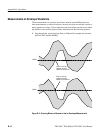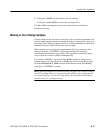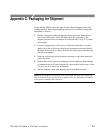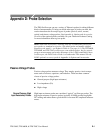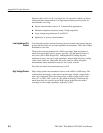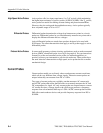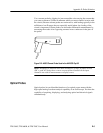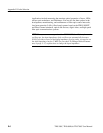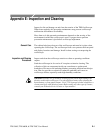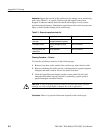
Appendix E: Probe Selection
D–4
TDS 500C, TDS 600B, & TDS 700C User Manual
Active probes offer low input capacitance (1 to 2 pF typical) while maintaining
the higher input resistance of passive probes (10 kW to 10 MW). Like Z
O
probes,
active probes are useful for making accurate timing and phase measurements.
However, they do not degrade the amplitude accuracy. Active probes typically
have a dynamic range of ±8 to ±15 V.
Differential probes determine the voltage drop between two points in a circuit
under test. Differential probes let you simultaneously measure two points and to
display the difference between the two voltages.
Active differential probes are stand-alone products designed to be used with
50 W inputs. The same characteristics that apply to active probes apply to active
differential probes.
In some small-geometry or dense circuitry applications, such as surface mounted
devices (SMD), a hand-held probe is too big to be practical. You can instead use
fixtured (or probe card mounted) active probes (or buffered amplifiers) to
precisely connect your instrument to your device-under-test. These probes have
the same electrical characteristics as high speed, active probes but use a smaller
mechanical design.
Current Probes
Current probes enable you to directly observe and measure current waveforms,
which can be very different from voltage signals. Tektronix current probes are
unique in that they can measure from DC to 1 GHz.
Two types of current probes are available: one that measures AC current only
and AC/DC probes that utilize the Hall effect to accurately measure the AC and
DC components of a signal. AC-only current probes use a transformer to convert
AC current flux into a voltage signal to the oscilloscope and have a frequency
response from a few hundred hertz up to 1 GHz. AC/DC current probes include
Hall effect semiconductor devices and provide frequency response from DC to
50 MHz.
High Speed Active Probes
Differential Probes
Fixtured Active Probes



